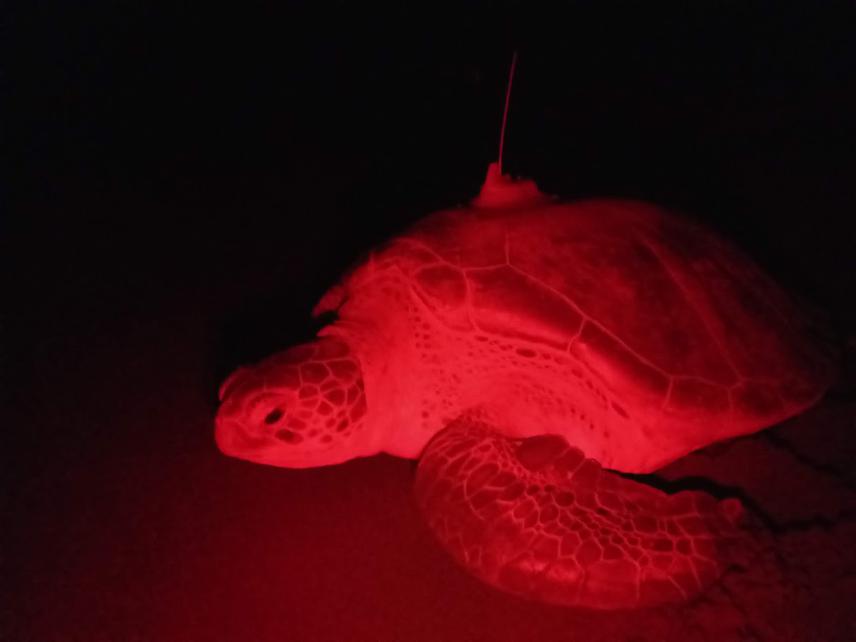Jaime Restrepo
Globally endangered, green turtle populations are conservatively estimated to have declined 37–61% over the past decades worldwide. The protected beach at Tortuguero National Park in Costa Rica is considered the most important nesting site for green turtles in the Atlantic Ocean. To better understand whether satellite telemetry comprehensively represent migration routes of green turtles from this rookery, I will tag several green sea turtles after they complete their nesting process.

Female green turtle equipped with satellite transmitter being released on the beach.
Each turtle will be equipped with a satellite transmitter tag, which will allow me to follow them remotely; gathering geo-spatial data to determine post-nesting migration routes for green sea turtles breeding at this rookery. Furthermore, I will be able to identify specific foraging areas supporting this population across the Caribbean Sea basin. I will compare connectivity information from existing telemetry data looking to illuminate missing migration routes utilized by green turtles nesting at Tortuguero. The aim of this project is to understand population connectivity for green turtles between their breeding site, and various foraging grounds to inform conservation efforts protecting key areas for this species in the region.
Header: Release green turtle (Chelonia mydas) returning to the sea after successfully nesting at Tortuguero beach, Costa Rica. Equipped with a satellite transmitter to monitor its movement and migration patterns. © Jimena Gutiérrez-Lince. Former Field Research Coordinator, Sea Turtle Conservancy.